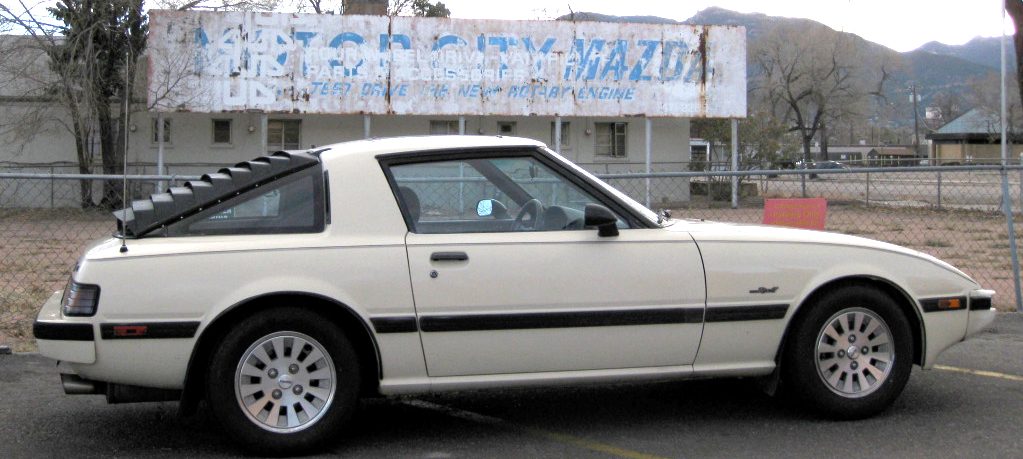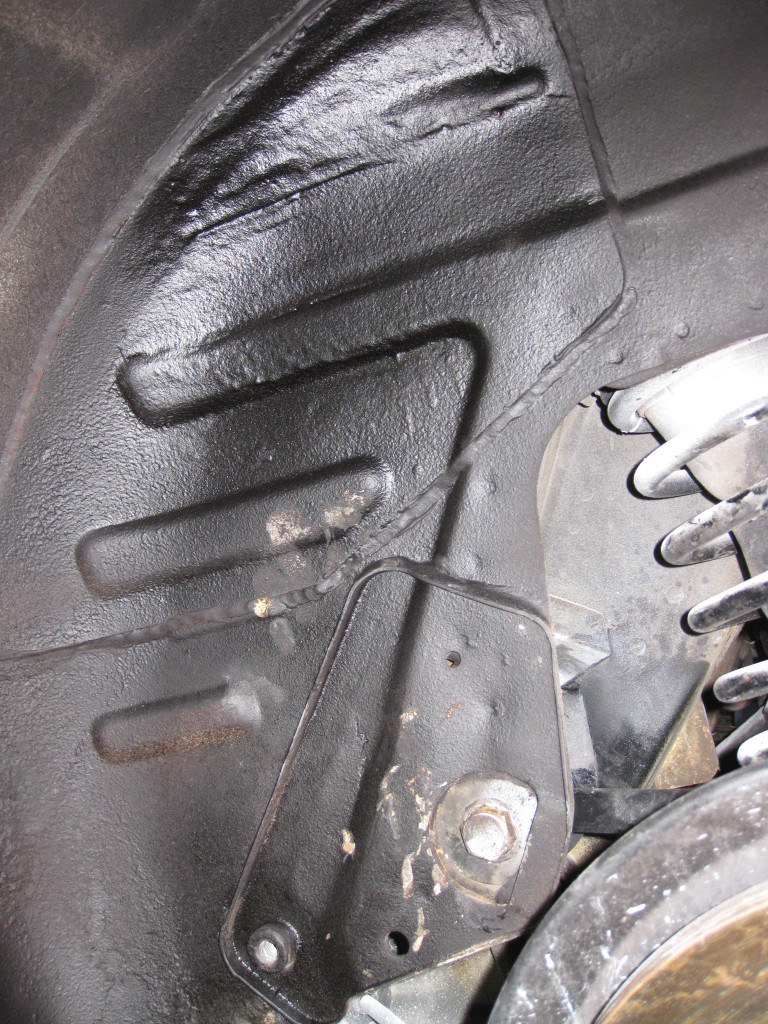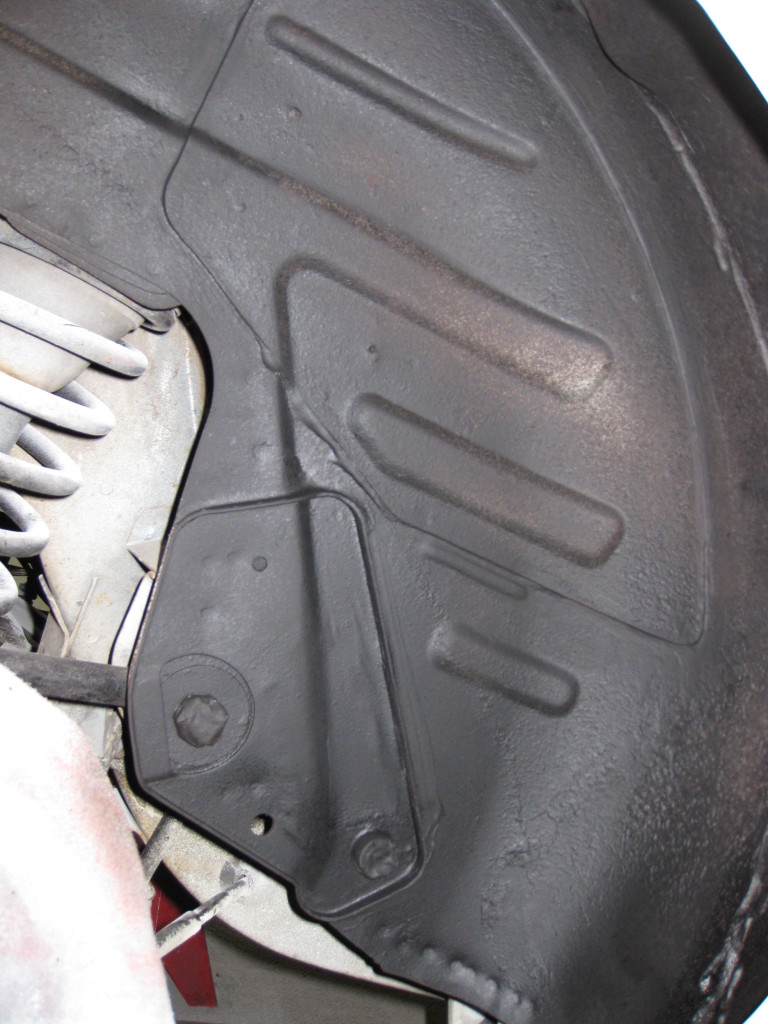Part one of the wheel well rust will show you what we started with.
The loose rust was first knocked out by lightly tapping the surrounding area with a small ball peen hammer. It really helps to show the extent of the damage. Getting out the vacuum and keeping things clean helps to keep the dust down. Once all the loose rust has fallen off, brush the area with naval jelly and let it sit for 10-15 minutes. Rince the naval jelly off with water after it has sat on the area.
The rust repair was started on the exterior in the wheel well itself since this is the area that is actually seen. All the interior rust is covered up by the bins and trim pieces so the repairs don’t need to look perfect just functional and clean.
Before the actual rust repair started, all the rear interior trim needed to be removed. Sparks will fly during cutting, grinding, and welding. The last thing anyone want to happen is to set the car on fire. Also keep a fire extinguisher handy throughout the project. Once the interior was remove from the rear of the car, welding blankets were draped over the seats and front carpet to protect the remaining interior. An additional welding blanket was set on the wheel wells in the interior to keep sparks to a minimum.
We first started by cutting out the affected area cleanly.
Also you can see all of the existing seam sealer was removed. The removed metal has two bends in it that needed to be replicated. The control arm bracket shown required 16 ga. metal. All the other repairs used 20 ga. metal. Welding was done with a MIG welder with gas using a stitching technique.
The welding at the top of the wheel well has compound curves and required multiple small pieces and scrap with compound curves left from a previous project were also used. Once all the exterior welding was complete, it was time to move onto the interior.
First the rusted interior areas were cut out than thoroughly cleaned with a vacuum. All the remaining rust was ground off the metal and treated with naval jelly. All hidden areas were sprayed with a weld through primer to prevent future rust.
Once patch panels were welded in place, it was time for finishing. A small amount of body filler was used so the repair would completely disappear. More care with the filler was used on the exterior since the repairs can be seen when looking past the wheels into the wheel wells. The interior did get some filler so the repair wouldn’t show through the interior panels.
After completion of the rust repair, the interior was painted to protect the metal from future rust.
The exterior was seam sealed around the edge of the control arm mount and upper added structural support to prevent future rust. The factory didn’t do a good job of seal sealing the wheel well causing the rust to begin with. The wheel well was then primed and sprayed with undercoat.




